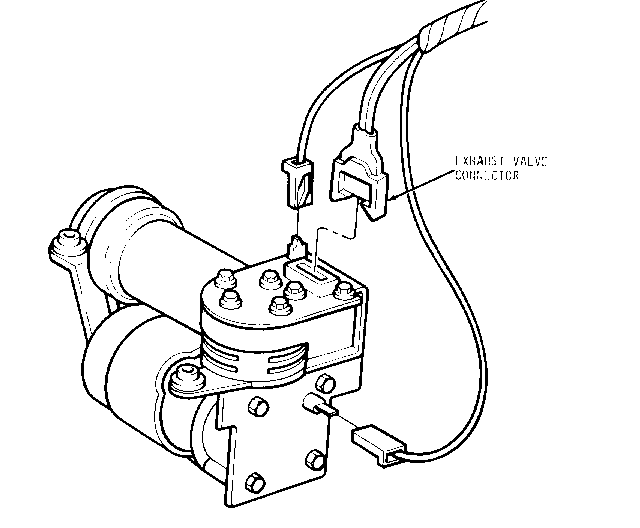DEAD BATTERY OR NO CRANK AFTER OVERNIGHT SET

Model and Year: ALL 1980-84 VEHICLES EQUIPPED WITH ECM
If a vehicle exhibits a low or dead battery after an overnight set, or goes down over a period of two (2) or three (3) days, the electrical system should be checked for an excessive electrical drain using the following procedures.
Remove the underhood lamp bulb (if equipped) and turn ignition off.
Charge the battery to a full state of charge.
Disconnect negative battery cable, connect an ampmeter capable of carrying at least 20 amp in series between the battery terminal and the negative battery cable. With the key off, note amperage draw (should not be more than 0.5 amp, doors closed all systems turned off).
If more than 0.5 amp drain is present, the vehicle's electrical system should be checked by pulling fuses to determine component causing the excessive amperage drain.
If the larger capacity ampmeter indicates less than 0.5 amps, remove it from the battery and install the high impedance digital multimeter J-34029 in its place. Set the selector switch to 2 on the DCA scale, turn selector switch counter clockwise for descending scale until an accurate milliamp reading is obtained.
NOTICE: Do not open doors or operate any equipment that would draw more than 2.0 amps or the fuse on the digital volt ohm meter will blow. If blown, it must be replaced with a 2 amp fast blow fuse only or meter will be damaged.
Starting with the 2,000 MA (milliamps) setting start switching the right selector switch down the scale until an accurate amperage drain reading is obtained.
Normal parasitic current drains on the battery are 10 MA (milliamps) to 30 MA (milliamps). If more than 30 MA drain is indicated on the digital volt ohm meter, the vehicle's electrical system components such as ignition switch, trunk lamps, tone generators, etc. should be checked to determine the component causing excessive drain on the battery.
ECM TEST
If during previous testing excessive amperage was found (over 30 MA), the ECM should be tested as follows.
Remove digital volt ohm meter, reconnect battery cable to battery.
Connect positive (red) lead of digital volt meter to the second terminal in from the right on the ECM ALDL diagnostic connector under the instrument panel. Connect negative (black) lead to any convenient good ground.
Turn ignition switch on for five (5) seconds and then off. With ignition switch "on", the meter should register five (5) volts. With ignition "off", the voltage should be zero (0).
If the voltage is still being displayed on the volt meter and ignition has been off for at least ten (10) seconds, the ECM is staying powered up when it shouldn't be and should be replaced.
If the ECM is replaced, the same "on-off" test should be performed again to insure the problem is corrected.
NOTICE: Any ECM found with this failure mode should have the failure noted on the yellow ECM return tag as "battery goes dead, ECM stays powered up with ignition off".

General Motors bulletins are intended for use by professional technicians, not a "do-it-yourselfer". They are written to inform those technicians of conditions that may occur on some vehicles, or to provide information that could assist in the proper service of a vehicle. Properly trained technicians have the equipment, tools, safety instructions and know-how to do a job properly and safely. If a condition is described, do not assume that the bulletin applies to your vehicle, or that your vehicle will have that condition. See a General Motors dealer servicing your brand of General Motors vehicle for information on whether your vehicle may benefit from the information.
